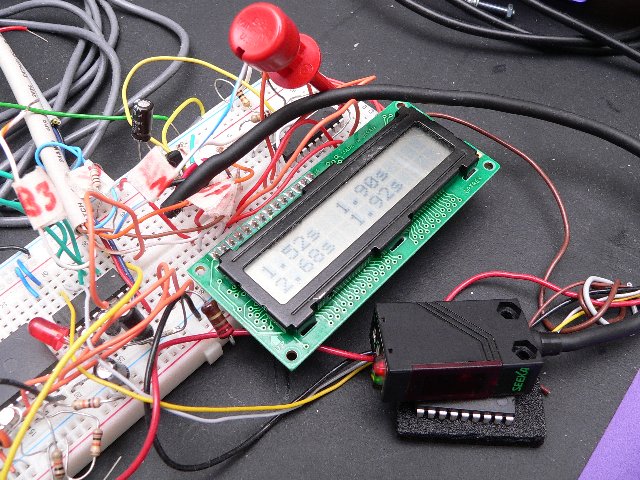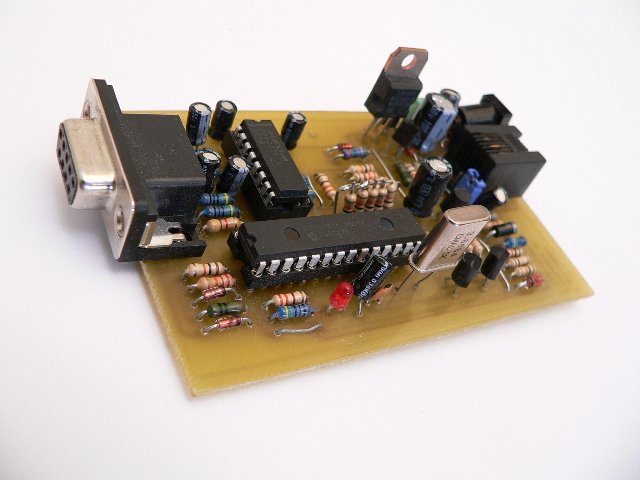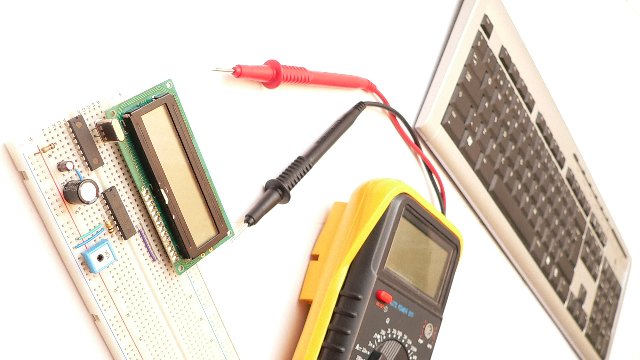Skitimer

A dear friend of mine is competing in crosscountry skiing. Before each competition he has a set of skies which his team prepares with ski wax and tests several times, to determine which pair of skies are the best. As tracks and weather differ from one competition to the other, the team always needs to do the test the same day as the competition to get the most updated results.
When testing a skies glide they were in need for a timer which would give accurate results when testing the individual pair of skis. Equipment like this is available on the market, however they wanted something that would suit their needs and budget.
I used a wellknown method with an IR-module, reflectors and a microcontroller for timetaking and interface to a lcd. Testing is being performed at the track by setting up reflectors at the start and the end of a small. Positioning the skitimer by the leg with consideration of the IR-module and reflectors, testing is much more accurate than by using the handheld timer, that was used before.
I decided to use a two-row 16-character display. That way I could fit four different timings at the screen for comparison. 10-millisecond resolution seemed to be accurate enough for this task.
SMS-Controller
The SMS-controller has been my most interesting but also time-consuming project so far. First I just wanted to build a burglar alarm that would send me an SMS if an alarm is set. Later on I wanted to be able to control equipment (for example an electric powered sauna) by sending the controller a SMS. The project has been going on for a couple of years but as I haven't had any need for it yet, I haven't finished the controller. The last code I wrote was for handling incoming messages and it worked like a charm, so the next phase would be to plan the electronics around it.
I used an old Nokia 6210, which accepts AT-commands and my favourite microcontroller PIC16F877A as the brain. I've been thinking about a second version, which would use GPRS instead, that way one could have real-time communication with the controller. It would also be much more convenient if traffic is frequent and big.
Weather-station
As my degree thesis in Arcada Polytechnic, I developed a weather station. The weather station measured temperature, barometric pressure and relative humidity. My weather station was the first in a series developed as research at Arcada Polytechnic. Although I couldn't make it change the outcome of the weather I named it TOR after the God of thunder in the ancient Nordic mythology. Information about the weather station is available at Arcadas WebPages: weather.arcada.fi. Look out for TOR1.
I've been planning to make myself an own weatherstation that would also measure rainfall, wind-speed and direction but so far I haven't had the time.
Other
For programming and testing I use an ICD, incircuit programmer and debugger.

